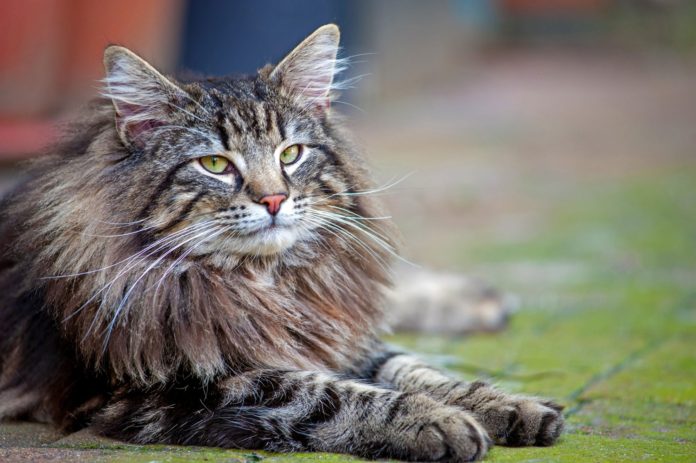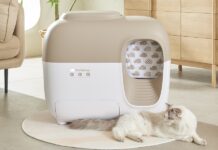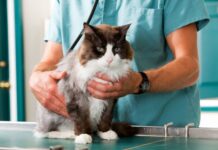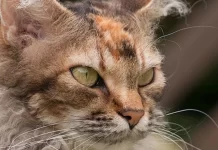Last Updated on January 19, 2024 by Fumipets
20 Long-Haired Cat Breeds: A Luxurious World of Feline Elegance
Long-haired cat breeds are known for their enchanting beauty, captivating everyone with their flowing, silky fur. These majestic felines exude an air of elegance and sophistication, making them a favorite choice among cat enthusiasts. With their striking appearances and unique personalities, long-haired cats have a special place in the hearts of pet lovers around the world.
In this article, we will explore the enchanting world of long-haired cat breeds, delving into their distinctive characteristics, grooming requirements, and the delightful companionship they offer. Whether you’re a seasoned cat owner or considering adopting a long-haired beauty, this guide will provide valuable insights into these graceful and charismatic creatures.
Let’s embark on a journey through the world of long-haired cats, uncovering the secrets behind their luxurious coats and understanding the joys and responsibilities that come with these magnificent feline companions.
Long-Haired Cat Breeds
Cats come in a wide range of sizes, colors, and types. Their coats, which may be short, long, in between, or even absent, are one of their many distinctive traits. A large part of what makes cats so endearing is their diverse set of traits. However, everyone has preferences, and many individuals like the lengthy coats of certain breeds. A large part of what makes certain breeds so well-liked and attractive—Persians spring to mind—is their long, luxuriant coats. Of course, Persian cats are not the only ones with long hair that are interesting to look at. The following 20 long haired cat breeds are guaranteed to catch your eye if you enjoy cats with long coats.
20 Long Haired Cat Breeds
Long-haired cats come in a variety of breeds. Though not often, certain breeds may result in long-haired cats. These 20 varieties are among the most well-known, well-liked cats with long-haired coats, yet this list is by no means comprehensive. Long hair is a distinguishing characteristic of several breeds and is often used to identify them.
1. Persian
| Average Weight: | 7-12 pounds |
| Average Length: | 14-18 inches |
| Average Lifespan: | 10-15 years |

Since Persians are essentially the standard long-haired breed, we’ll start with them. Persian cats have been around for a very long time and are well-known for having long, gorgeous coats. They were created in Mesopotamia, which is now known as Iran but was once known as Persia.
A world-traveling aristocrat by the name of Pietro Della Valle brought Persian cats into Europe for the first time in 1626. Persian cats are very popular and come with price tags to match. They are adored for both their gorgeous appearance and their quiet, nice disposition.
2. Japanese Bobtail
| Average Weight: | 6-12 pounds |
| Average Length: | 12-16 inches |
| Average Lifespan: | 9-13 years |

Japanese Bobtails appear in both long-haired and short-haired variants; they are not invariably long-haired cats. These cats have long, sleek muscles that enable them to jump to astonishing heights. They are also quite athletic.
This breed is renowned for being quite sociable. They like playing with other people and may invite you over to play with their toy, which may continue for a very long period. The breed, which was formerly beloved by Japan’s ruling elite, has never lost its air of royalty and continues to feel as if they own the world.
3. American Bobtail
| Average Weight: | 8-16 pounds |
| Average Length: | 14-18 inches |
| Average Lifespan: | 13-15 years |

If you observe a chopped tail on a dog breed, it was likely done by a human. However, the bobbed tail of the American Bobtail cat is a genetic trait. The combination of it and their striped coats contributes to the breed’s distinctively untamed look.
Despite having a wild appearance, American Bobtails are calm cats with a reputation for being laid-back and devoted to their family. These cats can even be trained to behave like dogs. Many of them will walk while being restrained by a leash and even show enthusiasm for the action.
4. American Curl
| Average Weight: | 5-10 pounds |
| Average Length: | 12-18 inches |
| Average Lifespan: | 9-13 years |

American Curls are not well renowned for their hair, despite having lengthy coats that have a regal appearance. Instead, these cats are famous for their distinctive curled ears, which created the breed’s moniker.
In 1981, a group of cats had a chance genetic mutation that led to the development of these immediately recognized ears. The breed was recognized by the biggest North American feline registries in only 5 years.
5. LaPerm
| Average Weight: | 5-10 pounds |
| Average Length: | 10-14 inches |
| Average Lifespan: | 10-15 years |

LaPerms are unusual among cats in that they have lengthy fur. The noticeable aspect of this breed’s coat, however, is not its length. Instead, the lengthy hair is shaped by the free, bouncy curls. In addition to being curly, LaPerm cats have silky smooth hair that is noticeably different from the curly coat of a Selkirk Rex or one of the few other cat breeds with curly coats.
Beyond merely its curly coat, this breed is well recognized. It has a well-liked personality that often causes trouble. Many claim that LaPerms are humorous. They are quite smart, and they often employ cunning to get their owners’ attention.
6. Birman
| Average Weight: | 6-13 pounds |
| Average Length: | 15-18 inches |
| Average Lifespan: | 12-16 years |

The Birman cat is revered in Burma, which is now known as Myanmar. Legend has it that a blue-eyed goddess interfered to thank a temple cat for its love and loyalty to a certain priest by giving it a magnificent white coat with colorful points and blue eyes, giving the breed its amazing and eye-catching beauty.
Birmans are renowned for sharing traits with the perennially popular Siamese cat, but without the Siamese breed’s characteristic yowling and wailing. Though they tend to be pretty calm cats generally, Birmans are smart and adventurous cats that love to get into mischief. They are the definition of curiosity killing the cat.
7. Ragamuffin
| Average Weight: | 10-20 pounds |
| Average Length: | 12-18 inches |
| Average Lifespan: | 12-16 years |

Ragamuffins and Ragdolls have a tight relationship. Although the Ragamuffin moniker pays respect to the breed’s beginnings, Ragdolls were bred with Persians and Himalayans to make them bigger and bring some aesthetic modifications to the breed.
These cats are lap cats at their core. They follow their family around and seize any chance to get onto your lap and have a snooze. But kids also value playtime a lot. Ragamuffins like destroying toys and scratching posts, but they are known to be picky and steer clear of furniture.
8. Ragdoll
| Average Weight: | 10-20 pounds |
| Average Length: | 17-21 inches |
| Average Lifespan: | 12-17 years |

The first Ragdolls were created in California in the 1960s, making them a relatively recent breed. Ragdolls are named after their preferred behavior, which is to flop onto your lap or arms and fall limp like a small ragdoll. They are bred to have calm and subdued attitudes.
Ragdolls are obviously not little cats. This is a huge breed, weighing up to 20 pounds. Although the breed was first developed in the 1960s, it wasn’t until 2000 that the Cat Fanciers’ Association gave it formal recognition. Maybe the designer of the breed’s very bizarre origin myths, which included tales involving CIA experimentation, extraterrestrial meddling, and human DNA infusions, had something to do with this. Of course, none of them can be supported by facts or evidence, but they’re all fascinating tales anyway.
9. Siberian
| Average Weight: | 8-17 pounds |
| Average Length: | 17-25 inches |
| Average Lifespan: | 11-18 years |

Siberia is a hostile, subarctic climate where any unprepared species would struggle to live. This explains why the Siberian cat breed has such a lengthy, dense coat. For more than a thousand years, it kept people safe from the icy winters.
Siberian breeds date back centuries. They weren’t, however, brought into the United States until quite lately. The first Siberians arrived in the US in 1990. The International Cat Association quickly recognized the breed in 1996. However, the Cat Fanciers’ Association did not officially recognize them as a breed until 2006.
10. Turkish Van
| Average Weight: | 10-18 pounds |
| Average Length: | 14-17 inches |
| Average Lifespan: | 12-17 years |

Turkish Vans are one of the rare breeds that deviates from the general rule that cats dislike water. Since these cats like playing in the water so much, they are often referred to as “swimming cats.”
Turkey is where the Turkish Van first appeared centuries ago. Since it is a natural breed, no one was involved in its creation. According to mythology, there were two of the kind aboard Noah’s Ark. They made landfall on Mount Ararat, which is close to Lake Van, the source of the breed’s name, after swimming ashore from the lake.
11. Turkish Angora
| Average Weight: | 5-9 pounds |
| Average Length: | 14-18 inches |
| Average Lifespan: | 12-18 years |

The Turkish Angora is another breed that has its roots in Turkey, as you could infer from the name. Over the years, several of these cats have been removed from Turkey as gifts for both invaders and visitors. According to legend, the breed was first introduced to the nation more than a millennium ago by Vikings.
The future of the Turkish Angora was dismal not long ago. The breed was on the verge of extinction. Fortunately, a breeding program run by the zoo in Ankara was able to save them from extinction, and the first Turkish Angoras arrived in the US in 1954. Despite being recognized by the majority of North American cat registries today, the Cat Fanciers’ Association didn’t officially recognize the breed until 1972, and even then, they only accepted white Angoras. Until 1978, colored Angoras were not allowed.
12. Manx
| Average Weight: | 8-12 pounds |
| Average Length: | 14-16 inches |
| Average Lifespan: | 8-14 years |

Due to a distinctive physical trait, the Manx breed is easily recognized. Manx cats don’t have tails as other cats do! The Manx cat was developed on the Isle of Man, an island off the coast of Britain, to be completely tail-free. The isolation of the island allowed a single tailless cat to develop into a whole breed.
They were used on the Isle of Man to perform the crucial chore of mousing or pursuing the rats that ruin dwellings and food sources. Manx cats in modern times are still skilled hunters who serve as watch cats, keeping an eye on anything even somewhat harmful that occurs in your neighborhood.
13. Selkirk Rex
| Average Weight: | 10-15 pounds |
| Average Length: | 14-18 inches |
| Average Lifespan: | 10-15 years |

A cat in sheep’s attire has been said to describe this breed. If you see one in person, you’ll understand why right away. They have long, woolly locks on their bodies that resemble sheep’s wool. The Selkirk Rex’s curly coat, which is the consequence of a natural genetic mutation, appears remarkably distinct even though it is related to Devon Rexes and Cornish Rexes.
When a litter of six kittens was discovered at a Montana animal shelter in 1987, that is how the Selkirk Rex breed got its start. The most of these cats were typical, but one female had a very unusually curled coat. The curly-haired cat was sent to a local Persian cat breeder, who married it to a black Persian. The breed got off to a wonderful start since three of the children also had curly coats.
14. Pixie-bob
| Average Weight: | 8-25 pounds |
| Average Length: | 20-24 inches |
| Average Lifespan: | 13-15 years |

There is some uncertainty over the Pixie-bob breed’s ancestry. However, it’s thought that the breed originated in 1985 when an accidental litter of cats that were half wildcat and half domestic cat was produced when a bobcat mated with a barn cat. There is no evidence that the breed’s ancestor was a real bobcat, despite the fact that many reputable breeders accept this story and incorporate it into the breed’s name.
Despite the fact that the breed was created in 1985, the Cat Fanciers’ Association has yet to formally recognize it. Other cat registries have acknowledged them, but not the major one. The fact that they belong to a restricted group of domestic cats that have a wild appearance and have a distinctive bobbed tail contributes to their popularity growth.
15. Scottish Fold
| Average Weight: | 6-13 pounds |
| Average Length: | 10-12 inches |
| Average Lifespan: | 11-14 years |

Like many breeds, the Scottish Fold is a tiny cat that gets its name from a distinctive physical trait. The unusual ears that are folded forward on the Scottish Fold are noticeable. Every breed member may trace her ancestry to a single woman called Susie. Susie was born with a genetic abnormality that allowed her ears to naturally curl down; local breeder William Ross noticed the feature and developed the Scottish Fold breed as a result.
It took barely ten years for this breed to reach the US when it initially appeared in the early 1960s. Despite being accepted by the majority of the main North American cat groups, Scottish Folds are not accepted in their native country because of worries that the folded ears might cause ear infections, deafness, and cartilage issues.
16. Maine Coon
| Average Weight: | 9-35 pounds |
| Average Length: | 30-40 inches |
| Average Lifespan: | 9-15 years |

Because they are the biggest breed of domestic house cats, Maine Coons have a legitimate claim to fame. The breed also holds the record for the world’s longest cat, measuring just over 47 inches in length, and they may weigh as much as 30 pounds.
The Maine Coon was invented in Maine, as its name indicates. As early as the 1800s, they were developed as a multipurpose worker breed for killing mice on farms and ships. Although the breed originated in Maine, nothing is known about how it came to be. It is a naturally occurring breed. Some people think they are related to long-haired cats that Marie Antoinette transported to America in an effort to flee there herself, but if tales are to be believed, then Vikings took them to North America before Columbus even set sail to the New World.
17. Himalayan
| Average Weight: | 7-12 pounds |
| Average Length: | 17-19 inches |
| Average Lifespan: | 9-15 years |

Despite having a Siamese appearance, Himalayan cats behave much like Persian cats. Given that these cats’ progenitor breeds are the Persian and Siamese, this makes logical. The goal was to create a cat with the sweet disposition of the Persian and the Siamese’s bright blue eyes and color points.
The Himalayan’s strong resemblance to a Siamese indicates that the breeders were successful in their endeavor. These cats are a perfect cross between the two breeds because they possess the sweet, collected, and reserved personalities that Persians are renowned for.
18. Norwegian Forest Cat
| Average Weight: | 13-22 pounds |
| Average Length: | 12-18 inches |
| Average Lifespan: | 12-16 years |

Norwegian Forest Cats have likely been residing in their native country for more than a millennium. The six enormous cats who towed Freya’s chariot, the Norse goddess, are said to be the ancestors of this breed, according to legend. In all honesty, we have no idea how the breed originated, but we do know that it is a very old breed.
Despite hundreds of years of existence, WWII came close to wiping out this species. Fortunately, the Federation Internationale Feline in Europe acknowledged them formally in 1977. Two years later, the US received its first shipment of two Norwegian Forest Cats, which quickly saw the popularity of the breed soar in North America.
19. Balinese
| Average Weight: | 5-10 pounds |
| Average Length: | 13-18 inches |
| Average Lifespan: | 9-15 years |

The Siamese breed’s long-haired offspring, known as the Balinese, was named after the stunning and elegant dancers who performed on the Indonesian island of Bali. These two breeds are almost identical to one another, with the exception of coat type. You may anticipate a Balinese to behave in a generally Siamese-like manner.
These cats need to be kept entertained since they are very bright and athletically built. They like playing and will even engage in dog-style fetch. The majority of Balinese cats have also been taught to walk on a leash.
20. Somali
| Average Weight: | 6-10 pounds |
| Average Length: | 11-14 inches |
| Average Lifespan: | 11-16 years |

A long-haired variation of the Abyssinian breed is the Somali cat. Since one of the first examples was shown at the Crystal Palace Cat Show during the Victorian era, Abyssinians have gained popularity. The Abyssinian finished third at this exhibition in 1871.
Somalis are renowned for always attempting to live their best lives. They like playing as hard as they can while climbing and jumping. These cats are very curious and are likely to use up all nine lives in their pursuit of an exciting experience. With one of these hairy cats underfoot, you’ll need to be alert!
Conclusion
Felines are as different as humans, as cat enthusiasts can testify. Each cat has a distinct look, personality, and nature. Every individual has preferences and decisions that make them unique. Not everyone likes cats, and others don’t like them with long coats. But any of the cats on this list might be a fantastic fit for you if you’re one of the cat enthusiasts who enjoys long, luxuriant hair on a lovely cat. If none of these long-haired cats appeals to you, there are obviously many more out there. Keep looking into your alternatives since there are so many different kinds of cats.
Questions & Answers
What Defines a Long-Haired Cat Breed?
Long-haired cat breeds are distinguished by their abundant, lengthy fur coats that cascade gracefully over their bodies. These breeds are characterized by their plush tails, luxurious manes, and tufted ears, creating an aura of regal elegance. While fur length can vary among individual cats, long-haired breeds consistently exhibit this striking feature, setting them apart from their short-haired counterparts.
What Are Some Popular Long-Haired Cat Breeds?
Several long-haired cat breeds have captured the hearts of cat lovers worldwide. Some of the most popular ones include the Persian, Maine Coon, Ragdoll, Siberian, and Norwegian Forest Cat. Each breed boasts its own unique charm, temperament, and grooming requirements, making them a diverse group of captivating felines.
What Are the Grooming Needs of Long-Haired Cats?
Maintaining the lavish coats of long-haired cats requires regular grooming. Brushing their fur is essential to prevent matting and tangles, which can be uncomfortable for the cat. Depending on the breed, daily or weekly brushing may be necessary to keep their coats in pristine condition. Additionally, routine bathing and occasional trimming of fur around the paws and hindquarters help ensure their hygiene and comfort.
What Are the Temperaments of Long-Haired Cats?
Long-haired cat breeds exhibit a wide range of personalities, but they often share common traits such as affection, gentleness, and intelligence. Persian cats, for example, are known for their sweet and calm demeanor, while Maine Coons are friendly and outgoing. Ragdolls are famously relaxed and affectionate, making them excellent companions.
Are Long-Haired Cats Suitable for Every Home?
While long-haired cats are adored for their beauty and personalities, it’s important to consider their grooming needs and shedding tendencies. Homes with individuals willing to invest time in grooming and cleaning up shedding fur are ideal for long-haired breeds. Families looking for affectionate and charming feline companions will find these breeds to be wonderful additions to their households, as long as they are prepared to meet their grooming requirements.


















